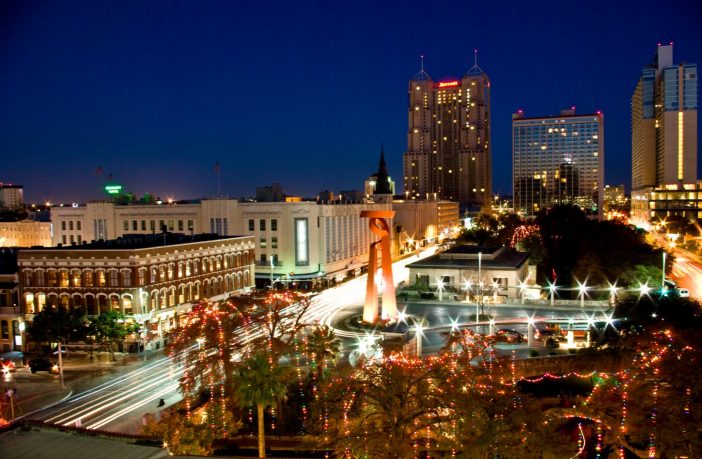By the lights of a shiny new study touting the supposed economic benefits of immigration, the South Texas city of San Antonio should be one of the most affluent urban areas in America, or at least the state. It’s neither, and not even close.
The New American Economy — which calls itself a “bipartisan research and advocacy organization fighting for smart federal, state and local immigration policies” – reported this month that 30 percent of San Antonio’s business owners are immigrants.
From that factoid, NAE extrapolates that the nation’s seventh largest city is enriching itself through immigration. “Having immigrants is an asset, so cities are starting to compete with who’s more welcoming,” NAE director Kate Brick asserted.
NAE estimates that San Antonio’s immigrant households accounted for $3.6 billion in “spending power” in 2017. The report noted that illegal aliens, comprising roughly one-third of the city’s immigrant population, earned $1.1 billion.
This means at least a portion of that $1.1 billion did not go to legal residents of San Antonio, where 37,600 people are currently out of work and collecting unemployment. Meanwhile, illegal aliens typically labor in a shadow economy where predatory employers exploit workers by paying under-market wages.
Contrary to NAE’s glowing account of immigrants’ economic clout, San Antonio is the poorest big city in Texas. Its poverty rate is second highest among large U.S. cities (just behind Detroit).
This is partly due to the presence of 63,000 (NAE’s conservative estimate) illegal aliens who earn far less on average than better-educated, higher-skilled legal workers.
Just two hours north of the border, San Antonio’s immigrant population is predominantly from Mexico, and the Migration Policy Institute reports that the city attracted the least “highly skilled” Mexican immigrants of any Texas metro area. Though educational attainment has improved, fewer than one in five Mexican arrivals holds a college degree.
Then there’s the matter of remittances.
Legal and illegal migrants in the U.S. sent $53.4 billion to Mexico and Central America last year. Despite their humble circumstances, an estimated 83 percent of Mexicans illegally in the U.S. wired money home. It’s reasonable to assume San Antonio’s Mexican immigrants send their fair share home too.
An illegal alien who remits 10 percent of his income is funneling as much money to Mexico as he purportedly pays in U.S., state and local taxes. Viewed another way, every dollar that goes south is one less dollar circulating through the San Antonio economy.
NAE does not mention remittances in its report, and did not respond to FAIR’s inquiries about this ongoing siphoning of assets.
Nor did NAE reference the documented drag that illegal immigration has on San Antonio and Texas at large. FAIR estimates that illegal aliens cost the state $10,994,614,550 annually in public benefits and services received.
Without an honest tally on the expense side of the ledger – as well as clear distinctions between legal and illegal immigrants — sweeping claims of immigration as an economic engine simply sputter and go nowhere.





2 Comments
Cheap Labor Illegal Aliens Does Not Mean Lower Prices to Americans Either
Look at Seattle’s new housing prices….LOL…or the price of food.
The US was once a country of laws. From the bottom, disregarding the leash law for a dog, to killing law enforcement officers and flying highjacked airliners into our greatest office buildngs, obeying our laws has become nothing but a big joke. I really regret this state of affairs, but there is nothing I can do but keep obeying the laws like I always have. I can’t serve on every jury, but I will no doubt be not forgiving or lenient any chance I get. Don’t come to my court.